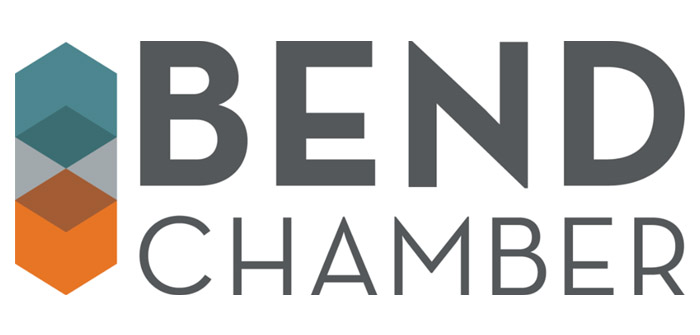Bend 101, a program hosted by the Bend Chamber, was held at the Tetherow Event Pavilion on May 10. This program is all about community connection and education, and strives to teach Bendites old and new about how Bend developed, where we came from and where we are going.
Hosted with a scenic backdrop of the sun setting over the Cascade Range, the night began with community networking, friends reconnecting and of course, a free drink ticket for each member along with carefully curated appetizers.
The presentation began with a video showcasing some highlights of Bend, from the friendly people and the lively, community-based culture to the wondrous outdoors that draw in so many visitors. The video then provided some tips for new folks to town, following the educational theme of Bend 101.
While the video showed some specific aspects of Bend’s culture, like tips on proper use of roundabouts, advice on when (or when not) to honk your car’s horn, polite trail etiquette, the leave-no-trace policy, how to share the road with cyclists and even some advice on how to float the Deschutes River, all of the sections highlighted an overarching theme: Bend is a unique town, with a unique culture.
The presentation continued, and aimed to answer the question: how did Bend become what it is today?
The emcee of the night was Brian Ladd, of the Ladd Group and Cascade Hasson Sotheby’s International Realty. He led the conversation for an introductory section and introduced another important topic of the night: sustainable tourism, and more specifically, how Bend’s tourism industry can grow in sustainable and ethical ways.
Following Brian, two presenters stepped forward to continue the discussion; Kelly Cannon-Miller, the executive director of the Deschutes County Historical Society and Historical Museum: and Damon Runberg, a state economist with Business Oregon who specializes in rural economics and regional labor market analysis.
The two lead a discussion that focused on the history and economic development of Bend, going all the way back to 1910, when the population of the settlement was a little over 500 people.
Cannon-Miller pointed out some interesting historical facts. While many people associate lumber with Bend’s early development due to the history and legacy of the Old Mill, she clarified that the original natural export of this region was actually obsidian. Also, while Bend is definitely feeling the strain of rapid population growth these days, she pointed out that from 1910 to 1920, the population boomed up to 5,415 residents — an increase of over 900 percent in just a decade.
In contrast, our town has also seen times where growth felt impossible. While lumber was a booming industry in WW1 and the resulting reconstruction era, the closing of the mills in the 1950s saw the majority of the town’s workers laid off, just weeks before Christmas, explaining why from 1950 to 1960, Bend saw the least growth of any decade.
While early growth was fueled by the lumber industry and the construction of the railroad, the effects of tourism could even be felt back then. Cannon-Miller pointed out the existence of the Bend Water Pageant, which was started in 1933 by Byron “Dutch” Stover, for the purpose of bringing more visitors to town.
As industries rose and fell, tourism only became more popular, resulting in a massive population boom in the 90s, and of course, resulting in Bend’s population reaching over 100,000 in the last few years. The funny part? Many of Bend’s early developers expected the town to reach that population in the 30s and 40s.
The discussion continued with interviews from Susan Connor, owner of Sunnyside Sports and Dave Nissen, founder and owner of Wanderlust Tours. The two went back and forth detailing countless events and names that helped shape the town into what it is now. Each example seemed to follow a theme: Bend attracted athletes of all kinds. From early cycling races that sparked a culture of mountain biking to a particularly active group of mostly Scandinavian individuals known as the Skyliners Ski Club, Bend certainly has a legacy of outdoor adventure and athleticism.
After a spirited discussion from the two interviewees, the sustainability director of Visit Bend, Serena Gordon, gave a short talk on what sustainability actually means in terms of tourism in Bend. The key point is that sustainability is more than just being nice to the environment. Sustainability rests on three supports, like a stool: social, economic and environmental. Visit Bend and those involved in the tourism industry are striving to create sustainability in each of those categories, harking on the point that the future of Bend depends on each of them.
The final speaker of the night was city manager Eric King, who led the group in a heartfelt “then and now” section, where he compared some of the first public services in Bend to what they are today, and explained the role that the City of Bend plays in each citizen’s life.
After closing statements, the presentation as a whole left the audience feeling more connected with each other, the history of Bend, and even the future of this city that people are so passionate about.





